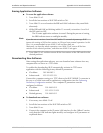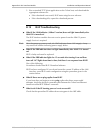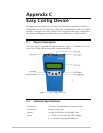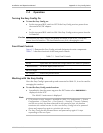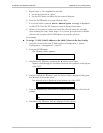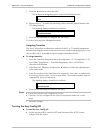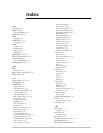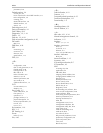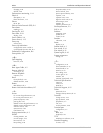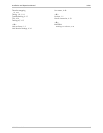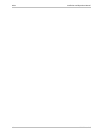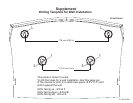
ASMi-52 Ver. 2.5 I-1
Index
—A—
AC Power, 2-4
Adapter cable
CBL-RJ-45/2BNC/E1, 1-5
Aging timeout, 4-9
Alarm
reporting, 1-10
Alarm Relay, 1-14
connecting, 2-4
Alarms
clearing, 6-10
displaying, 6-9
index of, 6-11
masking, 6-11
Applications, 1-2, B-2
ASMi-52 Menu map, 3-11
Autoconfiguration
TFTP or XMODEM, 4-44
Autonegotiation, 4-12
—B—
BERT
Patterns, 6-17
Bit Error Rate Test (BERT), 6-17
Bridge Table, 4-8
—C—
Clock modes, 1-8, 4-14
ConfiguRAD, 1-9
Configuration
aging timeout, 4-9
autonegotiation, 4-12
control port parameters, 4-16
current margin, 4-25
dedicated timeslots, 4-5
DTE interface data rate, 4-27
E1 interface, 4-28
fault indication, 4-12
guidelines, 5-1
host parameters, 4-2
LAN port, 4-7
LAN rate in mux unit, 4-11
line interface type, 5-4
line probing, 4-26
local card mode, 4-15
loop attenuation threshold, 4-26
low speed operation, 4-16
management parameters, 4-1
master clock, 4-14
mux unit data rate, 4-28
network managers, 4-3
physical ports, 4-22
port control mode, 4-18
power spectral density, 4-25
preliminary telnet host, B-7
QoS mapping, 4-9
remote card mode, 4-15
Serial DTE interface, 5-4
SHDSL interface, 4-22
SHDSL repeater, 4-27
Snext margin, 4-24
system parameters, 4-13
T1 Interface, 4-35
terminal port, 4-18
VLAN encapsulation, 4-5
Connections
AC power, 2-4
alarm relay connector, 2-4
DC Power, 2-4
DTE interface, 2-3
interface cables, 2-2
line, 2-3
power cables, 2-4
Telnet host, B-7
Connectors
alarm relay, A-5
control, A-4
DTE, A-1
E1/T1, A-3
Ethernet, A-3
Control port
CTS state, 4-17
DSR state, 4-18
interface, 4-17
interface characteristics, 3-7
parameters, 4-16
Control session
exiting, 4-49
Controls and indicators, 3-1
CRC-4, 6-4
code generation, 4-30
CTS state, 4-17
—D—
Data forms
navigating, 3-9
Data rate, 1-6
control port, 4-17
DC Power, 2-4
Dedicated timeslot, 3-10, 4-5
Default gateway, 4-3
Default IP communication



